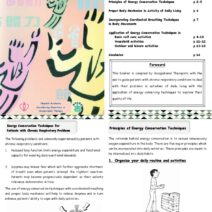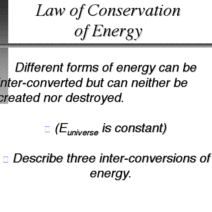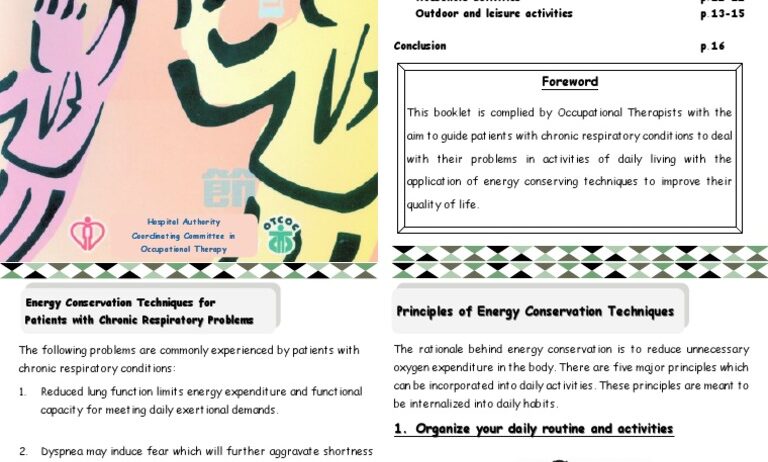Energy conservation grading can be likened to a finely tuned symphony, where every instrument plays a crucial role, harmonizing the interplay of physical capabilities and environmental awareness. In the realm of occupational therapy, this nuanced grading becomes a pivotal strategy, integrating individual therapeutic goals with the overarching objective of fostering sustainability and environmental mindfulness.
At its core, energy conservation involves a plethora of strategies designed to optimize the use of physical energy while performing daily activities. Patients undergoing occupational therapy often grapple with physical limitations, chronic pain, or fatigue. Here lies the intersection where energy conservation grading is not merely an auxiliary consideration, but indeed a fundamental component in the therapeutic regime. For the individual navigating the complexities of rehabilitative practices, understanding how to manage their energy can significantly enhance both their quality of life and functional independence.
Picture a gardener tending to their plants; they must know when to water, when to prune, and when to resist the urge to tinker too much. Likewise, in occupational therapy, the integration of energy conservation grading encourages clients to assess their energy reserves metaphorically, planting seeds of sustainability in their daily routines. This awareness fosters an intimate relationship with their physical abilities while simultaneously promoting a conscientious approach toward their environmental footprint.
Energy conservation grading is multifaceted, paralleling a tree where each branch represents distinct strategies. The strategies fall into three primary categories: task modification, planning, and environmental adaptations. Task modification entails altering how a task is performed, often to reduce physical strain. This can involve simplifying processes, employing assistive devices, or breaking tasks into manageable segments. Such modifications mean that patients learn to approach their activities with a newfound wisdom, establishing parallels between their physical limitations and the external demands of their environment.
Planning is crucial. It is akin to an artist sketching out their canvas before applying paint. Effective planning includes pacing activities, distributing tasks throughout the day, and prioritizing responsibilities. By orchestrating their day with intent, individuals can foster an environment where energy depletion is mitigated. This planning resonates deeply within occupational therapy, where patients cultivate meaningful routines that resonate with their personal goals. Furthermore, the additional emphasis on pacing aligns seamlessly with energy conservation principles, thus instilling a sense of agency and autonomy within the clients.
Environmental adaptations constitute the final branch of this tree. Optimizing one’s living space submits a dual benefit; clients not only navigate their surroundings more effectively but also cultivate an atmosphere conducive to energy efficiency. This could involve reconfiguring home layouts to enhance accessibility or integrating energy-efficient appliances. Just as bees pollinate a garden, transforming environments nurtures well-being and promotes sustainable practices, reflecting a mindful approach to daily living.
Integrating energy conservation grading in occupational therapy yields tangible benefits. Clients move forward not only with enhanced physical independence but with a deeper understanding of the eco-societal context they inhabit. They become architects of their rehabilitation, designing workflows that are economically sound and environmentally prudent. The proverbial light bulb illuminates their path, symbolizing the clarity and insight gained through this process. It emphasizes the intrinsic link between personal health and the broader health of our planet.
A notable facet of this integration is its ripple effect. As clients adopt energy conserving practices, they inadvertently become advocates for change within their communities. The small adjustments made in daily routines are akin to drops of water creating waves. These practice shifts can instill inspiration among family members, friends, and wider social circles, influencing collective engagement with energy conservation. It transforms the narrative from individual struggle to communal action, fostering a culture of sustainability.
Moreover, the potential for collaboration between occupational therapists and environmental agencies underscores a progressive pathway for advancing energy conservation grading. By intertwining these disciplines, holistic programs can emerge that equip clients with the tools necessary for not just personal recovery, but also environmental justice. This collaboration could manifest in educational seminars focusing on sustainable living practices, workshops for community enhancement, and even multidisciplinary retreats emphasizing the convergence of health and sustainability.
Critically, energy conservation grading must also contend with the disparities in resources available to different population groups. An inclusive approach is necessary. Accessibility to energy-efficient technologies and educational opportunities should be paramount considerations in these rehabilitative practices. Occupational therapy, by its very nature, seeks to empower individuals in ways that respect their unique circumstances, thus fostering an equitable landscape for all.
In conclusion, energy conservation grading indeed finds a profound and intricate role within the practice of occupational therapy. It nurtures a symbiosis of self-awareness, efficiency, and environmental stewardship, embodying a practice that transcends individual benefit to touch upon societal consciousness. Like the steady and deliberate strokes of a painter, the steady integration of these principles creates a rich tapestry of life where individual rehabilitation intersects beautifully with the stewardship of our planet. Through this lens, occupational therapy can be recognized not merely as a profession focused on healing the individual but also as a crucial player in the narrative of environmental conservation, steering the delicate balance between personal well-being and ecological integrity.






